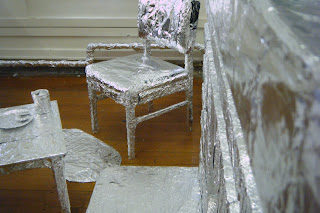The focus of Peyton’s work has been the small-scale portrait. She works most often in oil paint, but also in watercolour, pencil, and etching. Her paintings are characterized by elongated, slender figures with androgynous features. Sexually ambiguous, feminine qualities are regularly emphasised. Her work at times resembles fashion illustration. The artist, interviewed in the catalogue for the exhibition The Painter of Modern Life at the Hayward Gallery in London in 2007, has indeed acknowledged the importance of photography as an inspiration source for her art. She thus usually works from photographs. Her work is most often executed in oil paint, applied with washy glazes that are sometimes allowed or encouraged to drip. In addition, Peyton has created since the 1990s a broad range of prints, including monotypes, lithographs, woodcuts, and etchings. Experimenting with different techniques, she also uses a variety of diverse and handmade papers as well as various colored and monochromatic inks. Her portrayed subjects populate both her prints and paintings.
The idealization and stylization of known celebrities has led some critics to characterize her work as being in the tradition of Andy Warhol.
-Information from Wikipedia. http://en.wikipedia.org/wiki/Elizabeth_Peyton
I like Peyton's work as she has the ability to give life to her characters through her brush strokes, something I attempted in my rebellion series. Although her characters tend to be more intense at times and their emotions are very obvious to the viewer as she goes into more details in their facial expressions- something I avoided mainly because I was unsure of my ability to portray the right emotion and as a perfectionist that was unacceptable, but also because I wanted the body to have a language of its own- like a dance. And I wanted the body to communicate its silent message without using a smile or a frown to accompany it.
I didn't want to use drips in my paintings because they were present in Carpenters and also in some of Peytons' work, so what I did instead was push the paint from one surface to another so that it made up the visual effect all on its own. Dried layers of acrylic paint lay underneath and gave the printed colors more dynamic effects. All my paintings are acrylic on canvas, or acrylic on cardboard.









































